Impact of Gas Saturation and Gas Column Height at the Base of the Gas Hydrate Stability Zone on Fracturing and Seepage at Vestnesa Ridge, West-Svalbard Margin
Abstract
:1. Introduction
2. Geological Context and Site Description
| Site Name | Calypso Core Site | Latitude | Longitude | Water Depth (mbsl) | BSR Depth (mbsf) | Sample Depth (mbsf) | Sediment Clay Fraction |
|---|---|---|---|---|---|---|---|
| Site 5 | C19-3_GPC05 | 79.1427 | 5.2749 | 1321.00 | 160.00 | 05.41 | 0.6370 |
| 16.28 | 0.5388 | ||||||
| Site 12 | C19-3_GPC12 | 79.1285 | 6.1285 | 1234.13 | 170.00 | 06.60 | 0.5811 |
| 14.59 | 0.5882 | ||||||
| Site 4 | C19-3_GPC04 | 78.9967 | 6.9635 | 1194.74 | 190.00 | 06.13 | 0.4885 |
| 14.00 | 0.3230 | ||||||
| Site 1 | C19-3_GPC01 | 78.6929 | 8.2431 | 0891.00 | 160.00 | 07.05 | 0.4227 |
| 12.40 | 0.6425 |
3. Modeling Approach
3.1. Sediment Grain Size and Porosity Determination
3.2. Stress and Pressure Determination
4. Results and Discussion
4.1. The Free Gas Zone
4.2. Base Case Analysis
4.3. Effect of Sediment Clay Fraction on Fracturing Predictions
4.4. Effect of Porosity on Fracturing Predictions
4.5. Effect of Overpressure on Fracturing Predictions
4.6. Effect of Fracture Criterion on Fracturing Predictions
5. Conclusions
Author Contributions
Funding
Institutional Review Board Statement
Informed Consent Statement
Data Availability Statement
Acknowledgments
Conflicts of Interest
References
- Skarke, A.; Ruppel, C.; Kodis, M.; Brothers, D.; Lobecker, E. Widespread Methane Leakage from the Sea Floor on the Northern US Atlantic Margin. Nat. Geosci. 2014, 7, 657–661. [Google Scholar] [CrossRef]
- Andreassen, K.; Hubbard, A.; Winsborrow, M.; Patton, H.; Vadakkepuliyambatta, S.; Plaza-Faverola, A.; Gudlaugsson, E.; Serov, P.; Deryabin, A.; Mattingsdal, R. Massive Blow-out Craters Formed by Hydrate-Controlled Methane Expulsion from the Arctic Seafloor. Science 2017, 356, 948–953. [Google Scholar] [CrossRef] [PubMed] [Green Version]
- Westbrook, G.K.; Thatcher, K.E.; Rohling, E.J.; Piotrowski, A.M.; Pälike, H.; Osborne, A.H.; Nisbet, E.G.; Minshull, T.A.; Lanoisellé, M.; James, R.H. Escape of Methane Gas from the Seabed along the West Spitsbergen Continental Margin. Geophys. Res. Lett. 2009, 36, L15608. [Google Scholar] [CrossRef] [Green Version]
- Dupré, S.; Scalabrin, C.; Grall, C.; Augustin, J.-M.; Henry, P.; Şengör, A.C.; Görür, N.; Çağatay, M.N.; Géli, L. Tectonic and Sedimentary Controls on Widespread Gas Emissions in the Sea of Marmara: Results from Systematic, Shipborne Multibeam Echo Sounder Water Column Imaging. J. Geophys. Res. Solid Earth 2015, 120, 2891–2912. [Google Scholar] [CrossRef] [Green Version]
- Römer, M.; Sahling, H.; Pape, T.; Bahr, A.; Feseker, T.; Wintersteller, P.; Bohrmann, G. Geological Control and Magnitude of Methane Ebullition from a High-Flux Seep Area in the Black Sea—the Kerch Seep Area. Mar. Geol. 2012, 319, 57–74. [Google Scholar] [CrossRef]
- Römer, M.; Sahling, H.; Pape, T.; Bohrmann, G.; Spieß, V. Quantification of Gas Bubble Emissions from Submarine Hydrocarbon Seeps at the Makran Continental Margin (Offshore Pakistan). J. Geophys. Res. Oceans 2012, 117, C10015. [Google Scholar] [CrossRef]
- Römer, M.; Riedel, M.; Scherwath, M.; Heesemann, M.; Spence, G.D. Tidally Controlled Gas Bubble Emissions: A Comprehensive Study Using Long-Term Monitoring Data from the NEPTUNE Cabled Observatory Offshore Vancouver Island. Geochem. Geophys. Geosyst. 2016, 17, 3797–3814. [Google Scholar] [CrossRef]
- Ostanin, I.; Anka, Z.; di Primio, R.; Bernal, A. Identification of a Large Upper Cretaceous Polygonal Fault Network in the Hammerfest Basin: Implications on the Reactivation of Regional Faulting and Gas Leakage Dynamics, SW Barents Sea. Mar. Geol. 2012, 332, 109–125. [Google Scholar] [CrossRef]
- Roberts, H.H.; Carney, R.S. Evidence of Episodic Fluid, Gas, and Sediment Venting on the Northern Gulf of Mexico Continental Slope. Econ. Geol. 1997, 92, 863–879. [Google Scholar] [CrossRef]
- Daigle, H.; Bangs, N.L.; Dugan, B. Transient Hydraulic Fracturing and Gas Release in Methane Hydrate Settings: A Case Study from Southern Hydrate Ridge. Geochem. Geophys. Geosyst. 2011, 12, Q12022. [Google Scholar] [CrossRef]
- Hornbach, M.J.; Saffer, D.M.; Holbrook, W.S. Critically Pressured Free-Gas Reservoirs below Gas-Hydrate Provinces. Nature 2004, 427, 142–144. [Google Scholar] [CrossRef] [PubMed]
- Jain, A.K.; Juanes, R. Preferential Mode of Gas Invasion in Sediments: Grain-Scale Mechanistic Model of Coupled Multiphase Fluid Flow and Sediment Mechanics. J. Geophys. Res. Solid Earth 2009, 114, B08101. [Google Scholar] [CrossRef]
- Liu, X.; Flemings, P.B. Dynamic Multiphase Flow Model of Hydrate Formation in Marine Sediments. J. Geophys. Res. Solid Earth 2007, 112, B03101. [Google Scholar] [CrossRef] [Green Version]
- Tréhu, A.M.; Flemings, P.B.; Bangs, N.L.; Chevallier, J.; Gràcia, E.; Johnson, J.E.; Liu, C.-S.; Liu, X.; Riedel, M.; Torres, M.E. Feeding Methane Vents and Gas Hydrate Deposits at South Hydrate Ridge. Geophys. Res. Lett. 2004, 31, L23310. [Google Scholar] [CrossRef] [Green Version]
- Daigle, H.; Cook, A.; Fang, Y.; Bihani, A.; Song, W.; Flemings, P.B. Gas-Driven Tensile Fracturing in Shallow Marine Sediments. J. Geophys. Res. Solid Earth 2020, 125, e2020JB020835. [Google Scholar] [CrossRef]
- Hustoft, S.; Bünz, S.; Mienert, J.; Chand, S. Gas Hydrate Reservoir and Active Methane-Venting Province in Sediments on <20 Ma Young Oceanic Crust in the Fram Strait, Offshore NW-Svalbard. Earth Planet. Sci. Lett. 2009, 284, 12–24. [Google Scholar] [CrossRef]
- Petersen, C.J.; Bünz, S.; Hustoft, S.; Mienert, J.; Klaeschen, D. High-Resolution P-Cable 3D Seismic Imaging of Gas Chimney Structures in Gas Hydrated Sediments of an Arctic Sediment Drift. Mar. Pet. Geol. 2010, 27, 1981–1994. [Google Scholar] [CrossRef]
- Bünz, S.; Polyanov, S.; Vadakkepuliyambatta, S.; Consolaro, C.; Mienert, J. Active Gas Venting through Hydrate-Bearing Sediments on the Vestnesa Ridge, Offshore W-Svalbard. Mar. Geol. 2012, 332–334, 189–197. [Google Scholar] [CrossRef]
- Smith, A.J.; Mienert, J.; Bünz, S.; Greinert, J. Thermogenic Methane Injection via Bubble Transport into the Upper Arctic Ocean from the Hydrate-Charged Vestnesa Ridge, Svalbard. Geochem. Geophys. Geosyst. 2014, 15, 1945–1959. [Google Scholar] [CrossRef] [Green Version]
- Panieri, G.; Bünz, S.; Fornari, D.J.; Escartin, J.; Serov, P.; Jansson, P.; Torres, M.E.; Johnson, J.E.; Hong, W.; Sauer, S.; et al. An Integrated View of the Methane System in the Pockmarks at Vestnesa Ridge, 79°N. Mar. Geol. 2017, 390, 282–300. [Google Scholar] [CrossRef] [Green Version]
- Plaza-Faverola, A.; Vadakkepuliyambatta, S.; Hong, W.-L.; Mienert, J.; Bünz, S.; Chand, S.; Greinert, J. Bottom-Simulating Reflector Dynamics at Arctic Thermogenic Gas Provinces: An Example from Vestnesa Ridge, Offshore West Svalbard. J. Geophys. Res. Solid Earth 2017, 122, 4089–4105. [Google Scholar] [CrossRef] [Green Version]
- Plaza-Faverola, A.; Bünz, S.; Johnson, J.E.; Chand, S.; Knies, J.; Mienert, J.; Franek, P. Role of Tectonic Stress in Seepage Evolution along the Gas Hydrate-Charged Vestnesa Ridge, Fram Strait. Geophys. Res. Lett. 2015, 42, 733–742. [Google Scholar] [CrossRef] [Green Version]
- Plaza-Faverola, A.; Keiding, M. Correlation between Tectonic Stress Regimes and Methane Seepage on the Western Svalbard Margin. Solid Earth 2019, 10, 79–94. [Google Scholar] [CrossRef] [Green Version]
- Stein, S.; Cloetingh, S.; Sleep, N.H.; Wortel, R. Passive Margin Earthquakes, Stresses and Rheology. In Earthquakes at North-Atlantic Passive Margins: Neotectonics and Postglacial Rebound; Gregersen, S., Basham, P.W., Eds.; Springer: Dordrecht, The Netherlands, 1989; pp. 231–259. ISBN 978-94-009-2311-9. [Google Scholar]
- Turcotte, D.L.; Ahern, J.L. On the Thermal and Subsidence History of Sedimentary Basins. J. Geophys. Res. 1977, 82, 3762–3766. [Google Scholar] [CrossRef]
- Turcotte, D.L.; Haxby, W.F.; Ockendon, J.R. Lithospheric Instabilities. In Island Arcs, Deep Sea Trenches and Back-Arc Basins; American Geophysical Union (AGU): New York, NY, USA, 1977; pp. 63–69. ISBN 978-1-118-66575-6. [Google Scholar] [CrossRef]
- Yao, H.; Hong, W.-L.; Panieri, G.; Sauer, S.; Torres, M.E.; Lehmann, M.F.; Gründger, F.; Niemann, H. Fracture-Controlled Fluid Transport Supports Microbial Methane-Oxidizing Communities at Vestnesa Ridge. Biogeosciences 2019, 16, 2221–2232. [Google Scholar] [CrossRef] [Green Version]
- Flemings, P.B.; Liu, X.; Winters, W.J. Critical Pressure and Multiphase Flow in Blake Ridge Gas Hydrates. Geology 2003, 31, 1057–1060. [Google Scholar] [CrossRef]
- Myhre, A.M.; Eldholm, O. The Western Svalbard Margin (74°–80°N). Mar. Pet. Geol. 1988, 5, 134–156. [Google Scholar] [CrossRef]
- Engen, Ø.; Faleide, J.I.; Dyreng, T.K. Opening of the Fram Strait Gateway: A Review of Plate Tectonic Constraints. Tectonophysics 2008, 450, 51–69. [Google Scholar] [CrossRef]
- Fejerskov, M.; Lindholm, C.; Myrvang, A.; Bungum, H. Crustal Stress in and around Norway: A Compliation of in Situ Stress Observations. Geol. Soc. Lond. Spec. Publ. 2000, 167, 441–449. [Google Scholar] [CrossRef]
- Fjeldskaar, W.; Lindholm, C.; Dehls, J.F.; Fjeldskaar, I. Postglacial Uplift, Neotectonics and Seismicity in Fennoscandia. Quat. Sci. Rev. 2000, 19, 1413–1422. [Google Scholar] [CrossRef]
- Olesen, O.; Bungum, H.; Dehls, J.; Lindholm, C.; Pascal, C.; Roberts, D. Neotectonics, Seismicity and Contemporary Stress Field in Norway—Mechanisms and Implications. Quat. Geol. Nor. Geol. Surv. Nor. Spec. Publ. 2013, 13, 145–174. [Google Scholar]
- Eiken, O.; Hinz, K. Contourites in the Fram Strait. Sediment. Geol. 1993, 82, 15–32. [Google Scholar] [CrossRef]
- Johnson, J.E.; Mienert, J.; Plaza-Faverola, A.; Vadakkepuliyambatta, S.; Knies, J.; Bünz, S.; Andreassen, K.; Ferré, B. Abiotic Methane from Ultraslow-Spreading Ridges Can Charge Arctic Gas Hydrates. Geology 2015, 43, 371–374. [Google Scholar] [CrossRef] [Green Version]
- Mau, S.; Römer, M.; Torres, M.E.; Bussmann, I.; Pape, T.; Damm, E.; Geprägs, P.; Wintersteller, P.; Hsu, C.-W.; Loher, M. Widespread Methane Seepage along the Continental Margin off Svalbard-from Bjørnøya to Kongsfjorden. Sci. Rep. 2017, 7, 42997. [Google Scholar] [CrossRef] [PubMed] [Green Version]
- Veloso-Alarcón, M.E.; Jansson, P.; De Batist, M.; Minshull, T.A.; Westbrook, G.K.; Pälike, H.; Bünz, S.; Wright, I.; Greinert, J. Variability of Acoustically Evidenced Methane Bubble Emissions Offshore Western Svalbard. Geophys. Res. Lett. 2019, 46, 9072–9081. [Google Scholar] [CrossRef] [Green Version]
- Goswami, B.K.; Weitemeyer, K.A.; Bünz, S.; Minshull, T.A.; Westbrook, G.K.; Ker, S.; Sinha, M.C. Variations in Pockmark Composition at the Vestnesa Ridge: Insights from Marine Controlled Source Electromagnetic and Seismic Data. Geochem. Geophys. Geosyst. 2017, 18, 1111–1125. [Google Scholar] [CrossRef] [Green Version]
- Singhroha, S.; Chand, S.; Bünz, S. Constraints on Gas Hydrate Distribution and Morphology in Vestnesa Ridge, Western Svalbard Margin, Using Multicomponent Ocean-Bottom Seismic Data. J. Geophys. Res. Solid Earth 2019, 124, 4343–4364. [Google Scholar] [CrossRef]
- Singhroha, S.; Bünz, S.; Plaza-Faverola, A.; Chand, S. Detection of Gas Hydrates in Faults Using Azimuthal Seismic Velocity Analysis, Vestnesa Ridge, W-Svalbard Margin. J. Geophys. Res. Solid Earth 2020, 125, e2019JB017949. [Google Scholar] [CrossRef]
- Sultan, N.; Plaza-Faverola, A.; Vadakkepuliyambatta, S.; Buenz, S.; Knies, J. Impact of Tides and Sea-Level on Deep-Sea Arctic Methane Emissions. Nat. Commun. 2020, 11, 5087. [Google Scholar] [CrossRef]
- Sarkar, S.; Berndt, C.; Minshull, T.A.; Westbrook, G.K.; Klaeschen, D.; Masson, D.G.; Chabert, A.; Thatcher, K.E. Seismic Evidence for Shallow Gas-Escape Features Associated with a Retreating Gas Hydrate Zone Offshore West Svalbard. J. Geophys. Res. Solid Earth 2012, 117, B09102. [Google Scholar] [CrossRef] [Green Version]
- Mattingsdal, R.; Knies, J.; Andreassen, K.; Fabian, K.; Husum, K.; Grøsfjeld, K.; De Schepper, S. A New 6 Myr Stratigraphic Framework for the Atlantic–Arctic Gateway. Quat. Sci. Rev. 2014, 92, 170–178. [Google Scholar] [CrossRef]
- Myhre, A.M.; Thiede, J.; Firth, J.V.; Ahagon, K.S.; Black, K.S.; Bloemendal., J.; Brass, G.W.; Bristow, J.F.; Chow, N.; Cremer, M.; et al. (Eds.) Proceedings of the Ocean Drilling Program, 151 Initial Reports; Ocean Drilling Program: College Station, TX, USA, 1995; Volume 151. [Google Scholar]
- Thiede, J.; Myhre, A.M.; Firth, J.V.; Johnson, G.L.; Ruddiman, W.F. (Eds.) Proceedings of the Ocean Drilling Program, 151 Scientific Results; Ocean Drilling Program: College Station, TX, USA, 1996; Volume 151. [Google Scholar]
- Howe, J.A.; Shimmield, T.M.; Harland, R.; Eyles, N. Late Quaternary Contourites and Glaciomarine Sedimentation in the Fram Strait. Sedimentology 2008, 55, 179–200. [Google Scholar] [CrossRef]
- Sztybor, K.; Rasmussen, T.L. Late Glacial and Deglacial Palaeoceanographic Changes at Vestnesa Ridge, Fram Strait: Methane Seep versus Non-Seep Environments. Palaeogeogr. Palaeoclimatol. Palaeoecol. 2017, 476, 77–89. [Google Scholar] [CrossRef]
- Raymo, M.E.; Jansen, E.; Blum, P.; Herbert, T.D. (Eds.) Proceedings of the Ocean Drilling Program, 162 Scientific Results; Ocean Drilling Program: College Station, TX, USA, 1999; Volume 162. [Google Scholar]
- Terzariol, M.; Park, J.; Castro, G.M.; Santamarina, J.C. Methane Hydrate-Bearing Sediments: Pore Habit and Implications. Mar. Pet. Geol. 2020, 116, 104302. [Google Scholar] [CrossRef]
- Yun, T.S.; Santamarina, J.C.; Ruppel, C. Mechanical Properties of Sand, Silt, and Clay Containing Tetrahydrofuran Hydrate. J. Geophys. Res. Solid Earth 2007, 112, B04106. [Google Scholar] [CrossRef]
- Jung, J.W.; Jang, J.; Santamarina, J.C.; Tsouris, C.; Phelps, T.J.; Rawn, C.J. Gas Production from Hydrate-Bearing Sediments: The Role of Fine Particles. Energy Fuels 2012, 26, 480–487. [Google Scholar] [CrossRef]
- Park, J.; Santamarina, J.C. Revised Soil Classification System for Coarse-Fine Mixtures. J. Geotech. Geoenviron. Eng. 2017, 143, 04017039. [Google Scholar] [CrossRef] [Green Version]
- Park, J.; Castro, G.M.; Carlos Santamarina, J. Closure to “Revised Soil Classification System for Coarse-Fine Mixtures” by Junghee Park and J. Carlos Santamarina. J. Geotech. Geoenviron. Eng. 2018, 144, 07018019. [Google Scholar] [CrossRef] [Green Version]
- Daszinnies, M.; Plaza-Faverola, A.; Sylta, Ø.; Bünz, S.; Mattingsdal, R.; Tømmerås, A.; Knies, J. The Plio-Pleistocene Seepage History off Western Svalbard Inferred from 3D Petroleum Systems Modelling. Mar. Pet. Geol. 2021, 128, 105023. [Google Scholar] [CrossRef]
- Liu, J.L.; Haeckel, M.; Rutqvist, J.; Wang, S.; Yan, W. The Mechanism of Methane Gas Migration Through the Gas Hydrate Stability Zone: Insights from Numerical Simulations. J. Geophys. Res. Solid Earth 2019, 124, 4399–4427. [Google Scholar] [CrossRef] [Green Version]
- Madhusudhan, B.N.; Clayton, C.R.I.; Priest, J.A. The Effects of Hydrate on the Strength and Stiffness of Some Sands. J. Geophys. Res. Solid Earth 2019, 124, 65–75. [Google Scholar] [CrossRef]
- Daigle, H.; Dugan, B. Effects of Multiphase Methane Supply on Hydrate Accumulation and Fracture Generation. Geophys. Res. Lett. 2010, 37, L20301. [Google Scholar] [CrossRef]
- Flemings, P.B.; Stump, B.B.; Finkbeiner, T.; Zoback, M. Flow Focusing in Overpressured Sandstones: Theory, Observations, and Applications. Am. J. Sci. 2002, 302, 827–855. [Google Scholar] [CrossRef]
- Goswami, B.K.; Weitemeyer, K.A.; Minshull, T.A.; Sinha, M.C.; Westbrook, G.K.; Chabert, A.; Henstock, T.J.; Ker, S. A Joint Electromagnetic and Seismic Study of an Active Pockmark within the Hydrate Stability Field at the Vestnesa Ridge, West Svalbard Margin. J. Geophys. Res. Solid Earth 2015, 120, 6797–6822. [Google Scholar] [CrossRef] [Green Version]
- Brooks, R.H.; Corey, A.T. Hydraulic Properties of Porous Media and Their Relation to Drainage Design. Trans. ASAE 1964, 7, 26–28. [Google Scholar]
- Schowalter, T.T. Mechanics of Secondary Hydrocarbon Migration and Entrapment. AAPG Bull. 1979, 63, 723–760. [Google Scholar]
- Hildenbrand, A.; Schlömer, S.; Krooss, B.M. Gas Breakthrough Experiments on Fine-Grained Sedimentary Rocks. Geofluids 2002, 2, 3–23. [Google Scholar] [CrossRef]
- Hildenbrand, A.; Schlömer, S.; Krooss, B.M.; Littke, R. Gas Breakthrough Experiments on Pelitic Rocks: Comparative Study with N2, CO2 and CH4. Geofluids 2004, 4, 61–80. [Google Scholar] [CrossRef]
- Rutqvist, J.; Moridis, G.J. Numerical Studies on the Geomechanical Stability of Hydrate-Bearing Sediments. In Proceedings of the Offshore Technology Conference, OnePetro, Houston, TX, USA, 30 April–3 May 2007. [Google Scholar]
- Lias, S.G.; Bartmess, J.E.; Liebman, J.F.; Holmes, J.L.; Levin, R.D.; Mallard, W.G. Ion Energetics Data in NIST Chemistry WebBook, NIST Standard Reference Database Number 69; National Institute of Standards and Technology: Gaithersburg, MD, USA, 2018; Volume 20899. [Google Scholar]
- Linstrom, P.J.; Mallard, W.G. (Eds.) NIST Chemistry WebBook, NIST Standard Reference Database 69; National Institute of Standards and Technology: Gaithersburg, MD, USA, 2011. [Google Scholar]
- Waite, W.F.; Kneafsey, T.J.; Winters, W.J.; Mason, D.H. Physical Property Changes in Hydrate-Bearing Sediment Due to Depressurization and Subsequent Repressurization. J. Geophys. Res. Solid Earth 2008, 113, B7. [Google Scholar] [CrossRef] [Green Version]
- Zhang, T.; Sun, S. Thermodynamics-Informed Neural Network (TINN) for Phase Equilibrium Calculations Considering Capillary Pressure. Energies 2021, 14, 7724. [Google Scholar] [CrossRef]
- Singhroha, S.; Bünz, S.; Plaza-Faverola, A.; Chand, S. Gas Hydrate and Free Gas Detection Using Seismic Quality Factor Estimates from High-Resolution P-Cable 3D Seismic Data. Interpretation 2016, 4, SA39–SA54. [Google Scholar] [CrossRef] [Green Version]
- Hubbard, B.; Maltman, A. Laboratory Investigations of the Strength, Static Hydraulic Conductivity and Dynamic Hydraulic Conductivity of Glacial Sediments. Geol. Soc. Lond. Spec. Publ. 2000, 176, 231–242. [Google Scholar] [CrossRef]
- Gorman, A.R.; Holbrook, W.S.; Hornbach, M.J.; Hackwith, K.L.; Lizarralde, D.; Pecher, I. Migration of Methane Gas through the Hydrate Stability Zone in a Low-Flux Hydrate Province. Geology 2002, 30, 327–330. [Google Scholar] [CrossRef]
- Liu, X.; Flemings, P.B. Passing Gas through the Hydrate Stability Zone at Southern Hydrate Ridge, Offshore Oregon. Earth Planet. Sci. Lett. 2006, 241, 211–226. [Google Scholar] [CrossRef]
- Foschi, M.; Cartwright, J.A.; MacMinn, C.W.; Etiope, G. Evidence for Massive Emission of Methane from a Deep-water Gas Field during the Pliocene. Proc. Natl. Acad. Sci. USA 2020, 117, 27869–27876. [Google Scholar] [CrossRef]
- Kominz, M.A.; Patterson, K.; Odette, D. Lithology Dependence of Porosity In Slope and Deep Marine Sediments. J. Sediment. Res. 2011, 81, 730–742. [Google Scholar] [CrossRef]
- Dewhurst, D.N.; Aplin, A.C.; Sarda, J.-P.; Yang, Y. Compaction-Driven Evolution of Porosity and Permeability in Natural Mudstones: An Experimental Study. J. Geophys. Res. Solid Earth 1998, 103, 651–661. [Google Scholar] [CrossRef]
- Zoback, M.D. Reservoir Geomechanics; Cambridge University Press: New York, NY, USA, 2010. [Google Scholar]
- Swarbrick, R.E.; Osborne, M.J. Memoir 70, Chapter 2: Mechanisms That Generate Abnormal Pressures: An Overview; AAPG: Tulsa, OK, USA, 1998. [Google Scholar]
- Dugan, B.; Sheahan, T.C. Offshore Sediment Overpressures of Passive Margins: Mechanisms, Measurement, and Models. Rev. Geophys. 2012, 50, RG3001. [Google Scholar] [CrossRef]
- Daigle, H.; Worthington, L.L.; Gulick, S.P.; Van Avendonk, H.J. Rapid Sedimentation and Overpressure in Shallow Sediments of the Bering Trough, Offshore Southern Alaska. J. Geophys. Res. Solid Earth 2017, 122, 2457–2477. [Google Scholar] [CrossRef]
- Portnov, A.; Vadakkepuliyambatta, S.; Mienert, J.; Hubbard, A. Ice-Sheet-Driven Methane Storage and Release in the Arctic. Nat. Commun. 2016, 7, 10314. [Google Scholar] [CrossRef] [Green Version]
- Wallmann, K.; Riedel, M.; Hong, W.-L.; Patton, H.; Hubbard, A.; Pape, T.; Hsu, C.W.; Schmidt, C.; Johnson, J.E.; Torres, M.E. Gas Hydrate Dissociation off Svalbard Induced by Isostatic Rebound Rather than Global Warming. Nat. Commun. 2018, 9, 83. [Google Scholar] [CrossRef] [PubMed]
- Chabert, A.; Minshull, T.A.; Westbrook, G.K.; Berndt, C.; Thatcher, K.E.; Sarkar, S. Characterization of a Stratigraphically Constrained Gas Hydrate System along the Western Continental Margin of Svalbard from Ocean Bottom Seismometer Data. J. Geophys. Res. Solid Earth 2011, 116, B12102. [Google Scholar] [CrossRef] [Green Version]
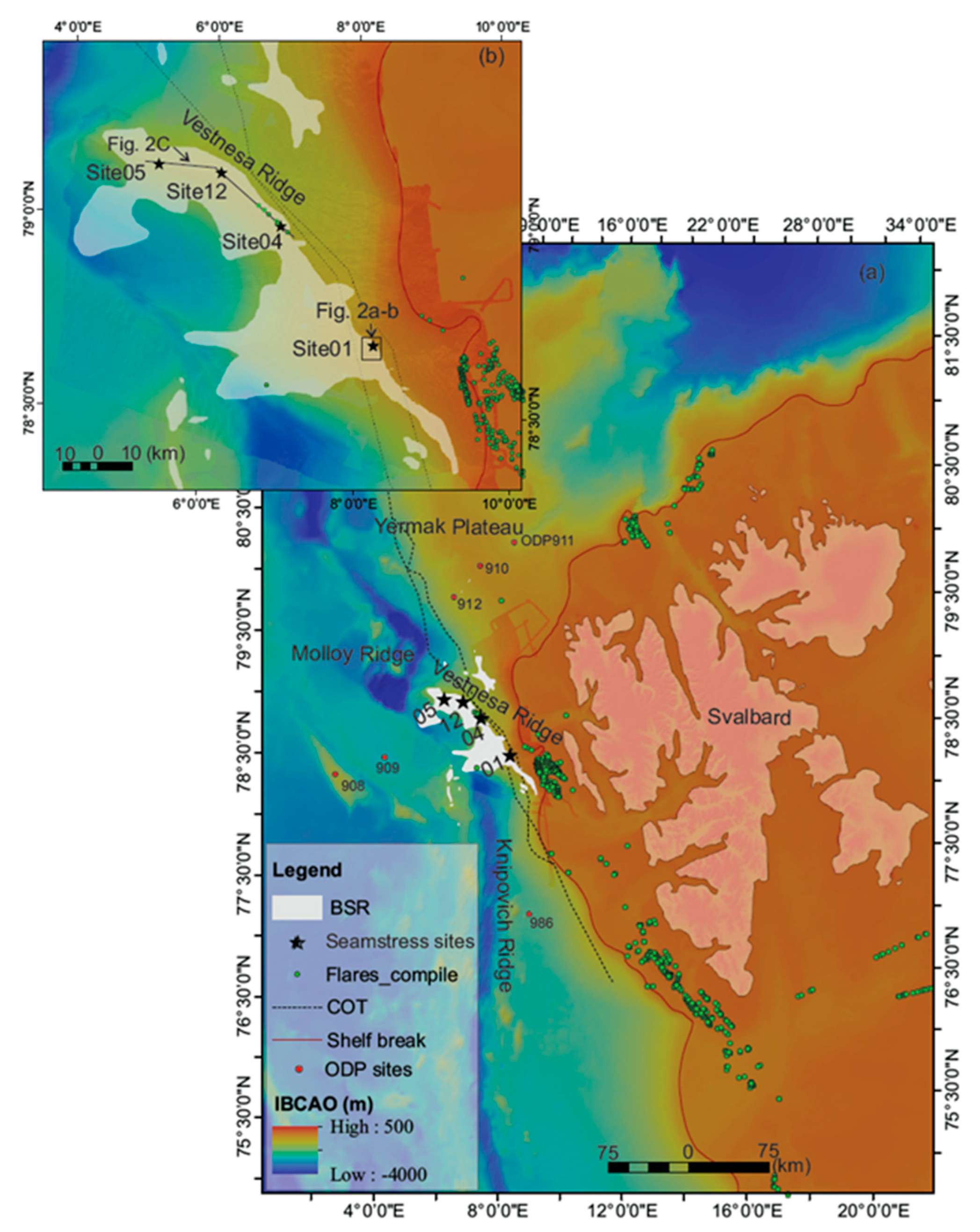


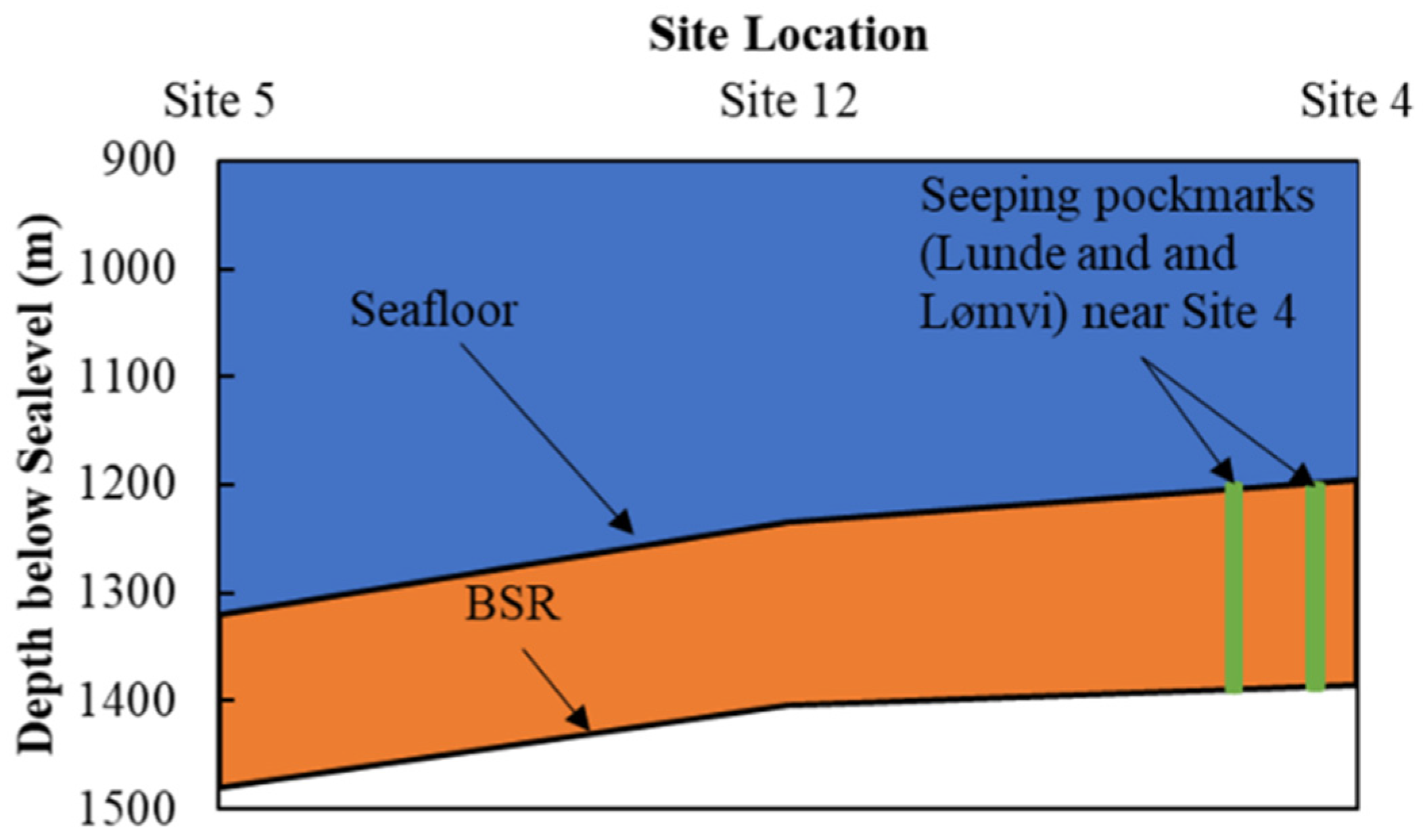


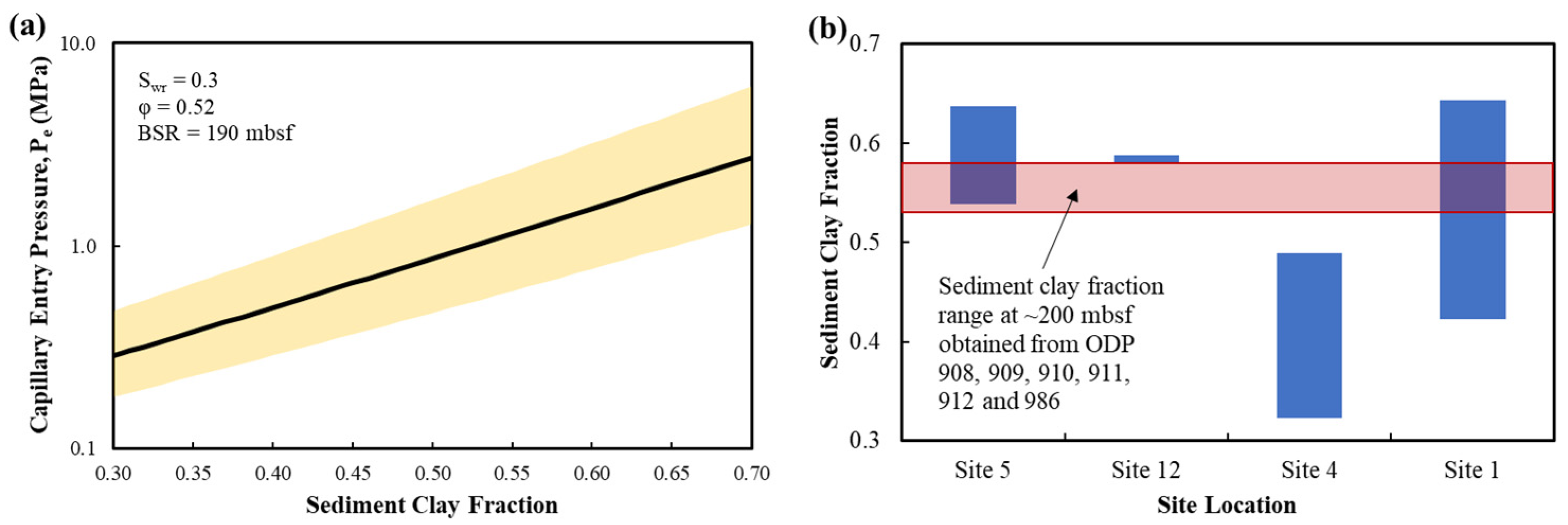

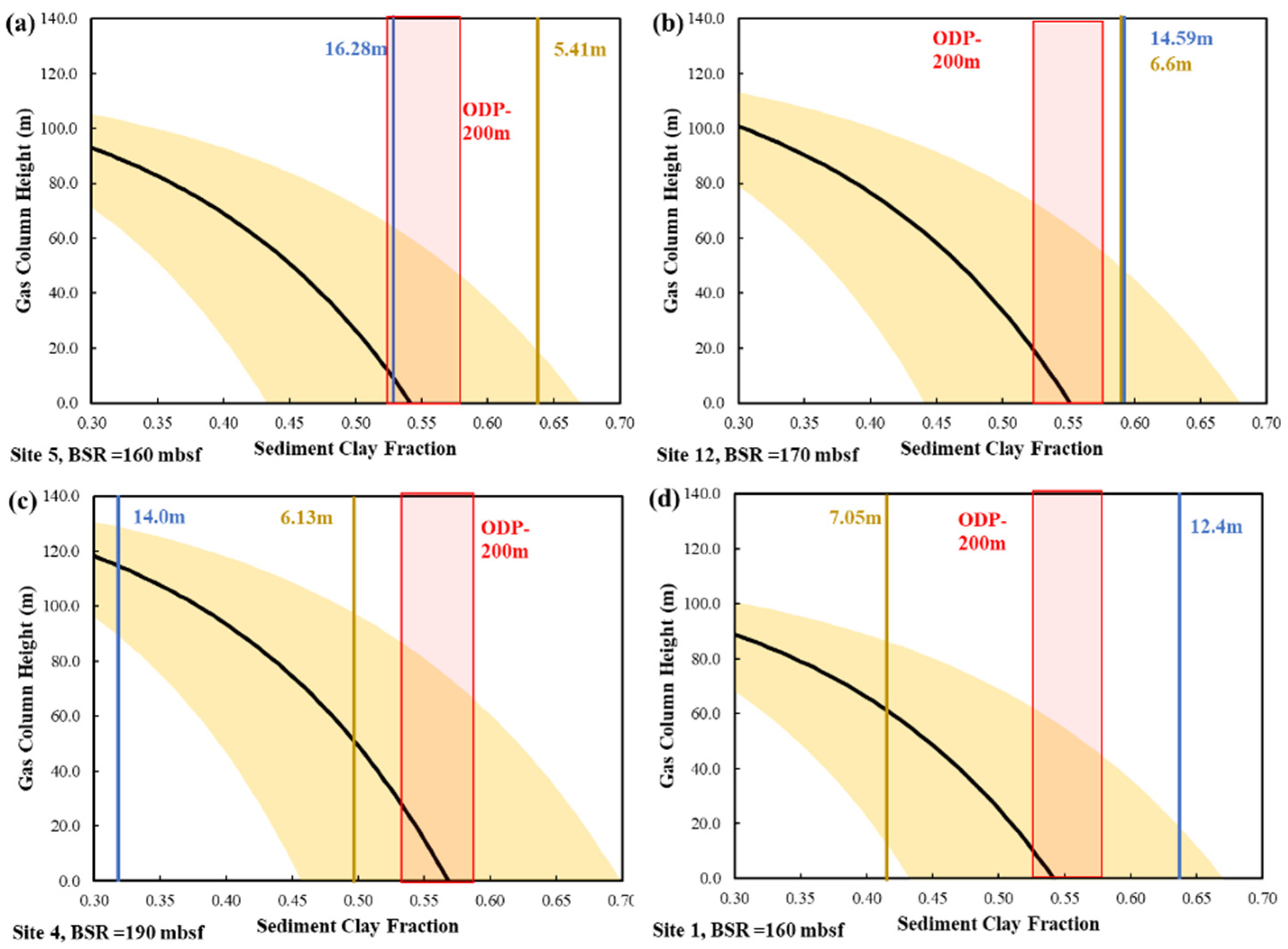

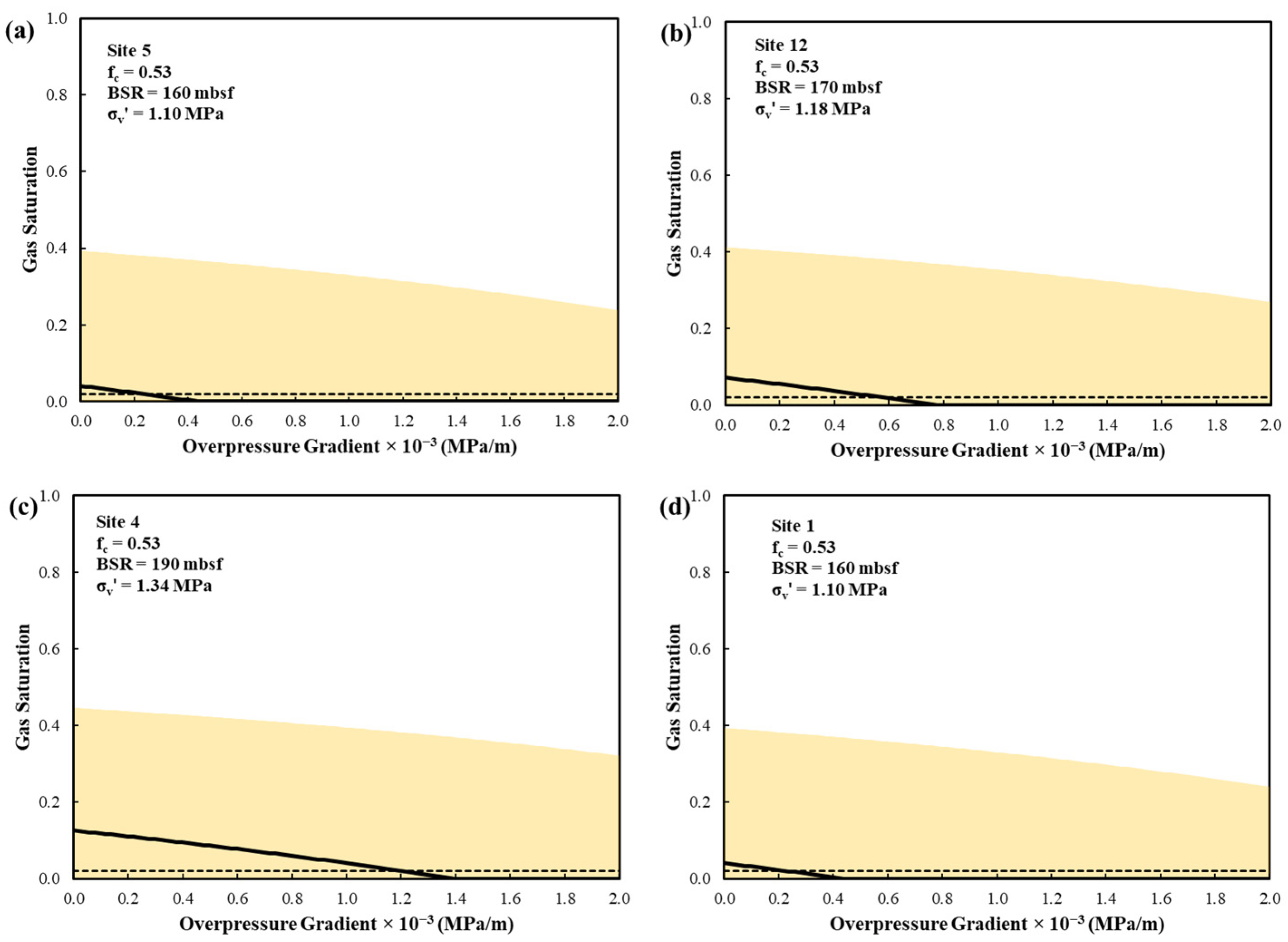
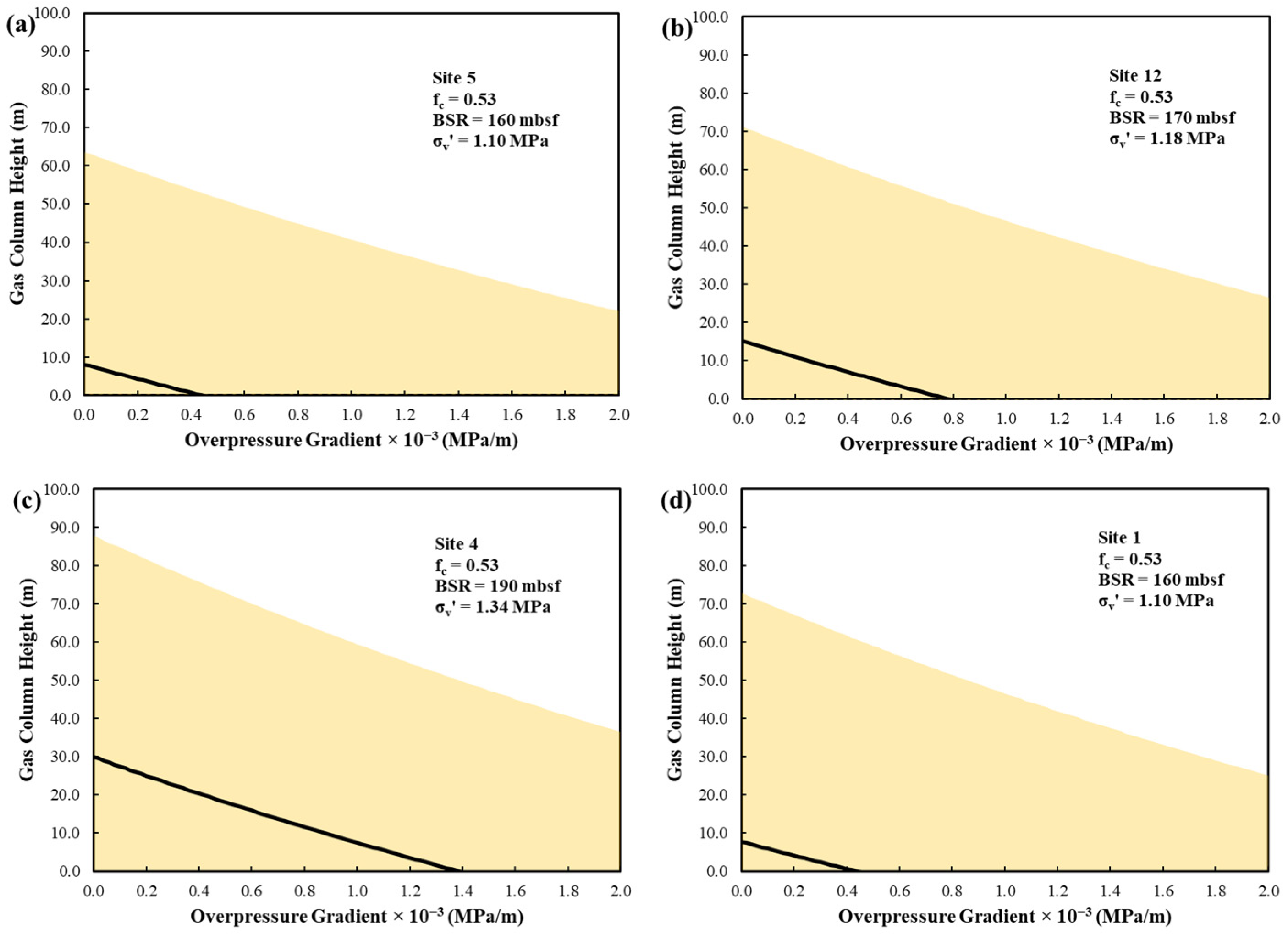
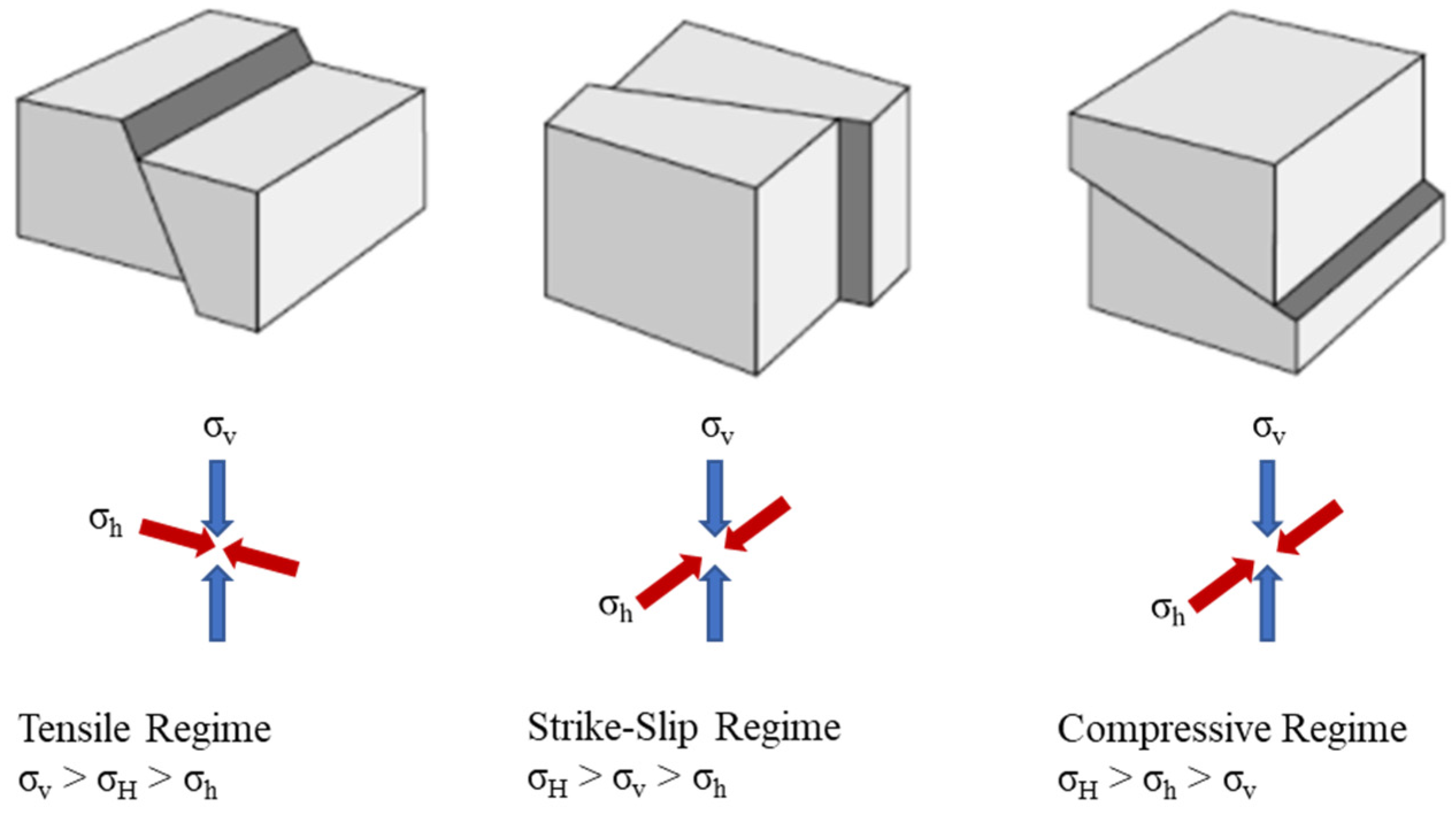

| Eqn Constant | Value | Eqn Constant | Value |
|---|---|---|---|
| A0 | +7.72334195380221 × 10−1 | A11 | −1.35518101733016 × 10−23 |
| A1 | −1.11004774526740 × 10−2 | A12 | +2.42580622585201 × 10−26 |
| A2 | +4.34425507785822 × 10−4 | A13 | −3.45480182930488 × 10−29 |
| A3 | −1.14789487122355 × 10−5 | A14 | +3.90463689278808 × 10−32 |
| A4 | +1.98324670901884 × 10−7 | A15 | −3.47684989316588 × 10−35 |
| A5 | −2.34230235582518 × 10−9 | A16 | +2.40717100585227 × 10−38 |
| A6 | +1.97427624709482 × 10−11 | A17 | −1.26806243404536 × 10−41 |
| A7 | −1.22870027847462 × 10−13 | A18 | +4.90753244518306 × 10−45 |
| A8 | +5.7935502941264 × 10−16 | A19 | −1.31484878192563 × 10−48 |
| A9 | −2.10963608612415 × 10−18 | A20 | +2.17782224669928 × 10−52 |
| A10 | +6.0147022201964 × 10−21 | A21 | −1.67942595431780 × 10−56 |
Publisher’s Note: MDPI stays neutral with regard to jurisdictional claims in published maps and institutional affiliations. |
© 2022 by the authors. Licensee MDPI, Basel, Switzerland. This article is an open access article distributed under the terms and conditions of the Creative Commons Attribution (CC BY) license (https://creativecommons.org/licenses/by/4.0/).
Share and Cite
Ramachandran, H.; Plaza-Faverola, A.; Daigle, H. Impact of Gas Saturation and Gas Column Height at the Base of the Gas Hydrate Stability Zone on Fracturing and Seepage at Vestnesa Ridge, West-Svalbard Margin. Energies 2022, 15, 3156. https://doi.org/10.3390/en15093156
Ramachandran H, Plaza-Faverola A, Daigle H. Impact of Gas Saturation and Gas Column Height at the Base of the Gas Hydrate Stability Zone on Fracturing and Seepage at Vestnesa Ridge, West-Svalbard Margin. Energies. 2022; 15(9):3156. https://doi.org/10.3390/en15093156
Chicago/Turabian StyleRamachandran, Hariharan, Andreia Plaza-Faverola, and Hugh Daigle. 2022. "Impact of Gas Saturation and Gas Column Height at the Base of the Gas Hydrate Stability Zone on Fracturing and Seepage at Vestnesa Ridge, West-Svalbard Margin" Energies 15, no. 9: 3156. https://doi.org/10.3390/en15093156
APA StyleRamachandran, H., Plaza-Faverola, A., & Daigle, H. (2022). Impact of Gas Saturation and Gas Column Height at the Base of the Gas Hydrate Stability Zone on Fracturing and Seepage at Vestnesa Ridge, West-Svalbard Margin. Energies, 15(9), 3156. https://doi.org/10.3390/en15093156






